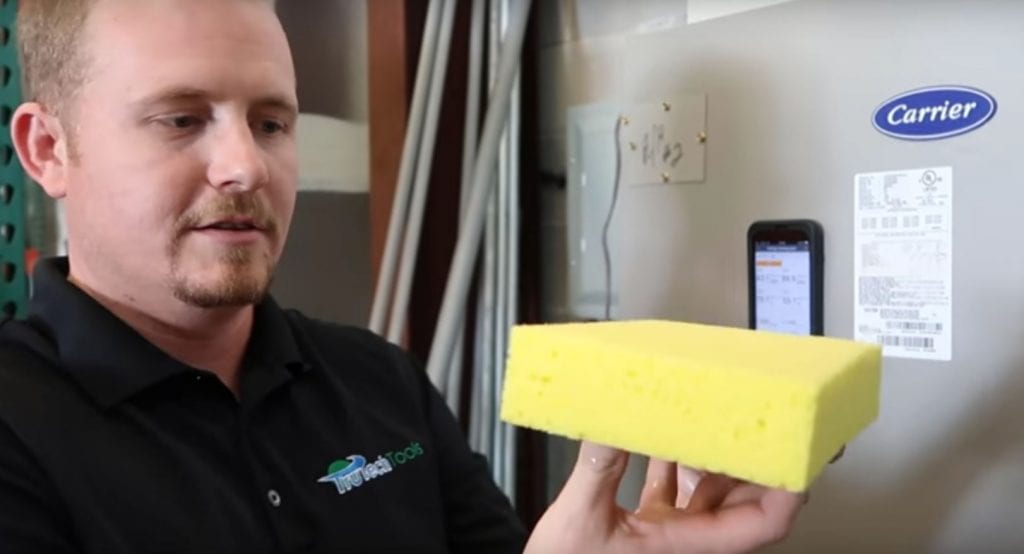Get Tech Tips
Subscribe to free tech tips.
Relative Humidity in the Supply Air Stream

When you first start checking your supply air with a thermo-hygrometer, you may notice that the relative humidity is REALLY HIGH. Often, the RH in a supply duct will be between 85% and 96% relative humidity on a system that is functioning as designed. The reason for this is fairly simple:
In order for dehumidification to occur, the air must reach dew point, otherwise known as 100% relative humidity.
Jim Bergmann explains it this way:
Think of a sponge being like air, and when it is fully expanded, it is like the air in the return. When the sponge is fully saturated and can accept no more water, it is at 100% RH. When it is completely dry, it is at 0% RH. Let's imagine that the sponge is 50% saturated and full-size in the return. When that sponge (air) goes over the evaporator coil, it is compressed because colder air can hold less moisture. Once that air is compressed (cooled) enough, it will begin to give up moisture. The point at which it starts to give up moisture is called the dew point or 100% RH. Once that air leaves the coil, it still remains in approximately the same temperature state (compressed sponge) as it was when it went over the coil. That means that unless heat is added or removed from that air, it will remain at 100% relative humidity.
So, why is it less than 100% RH in the supply?
There are several reasons why the air in the supply will be slightly below 100% in the supply. The first is contact factor or bypass factor, which are both terms used to demonstrate the efficiency of a coil at “contacting” the air. The greater the surface area of the coil and the longer the contact time of the air on the coil, the more efficiently heat will be transferred from the air to the coil.
Because no coil is 100% efficient, there will always be some air molecules that leave the coil warmer than others; this causes the airstream to be warmer overall and decreases the RH of the air stream. You will notice when a system has a higher coil air velocity (speed), it will have a higher bypass factor (lower supply humidity). When you run lower coil air velocity, the bypass factor will drop, and the supply RH will increase. (To learn more about air velocity, check out THIS article.)
There is also some heat added by the blower motor and possibly even the cabinet or supply ductwork. This additional dry-bulb heat results in a warmer airstream, thus some additional moisture capacity. Imagine a slight expansion of the sponge due to heat from the duct walls and the blower motor.
Once that supply air exits the duct and mixes with the room air, it is allowed to “expand” again, and the relative humidity drops below what it was initially. That is why supply air has a high RH in cooling mode.
Here is a video we did on the topic:
—Bryan











Comments
To leave a comment, you need to log in.
Log In